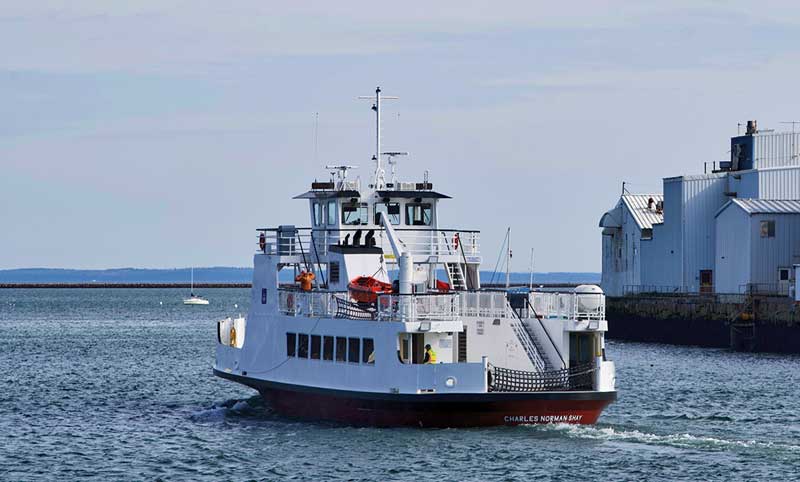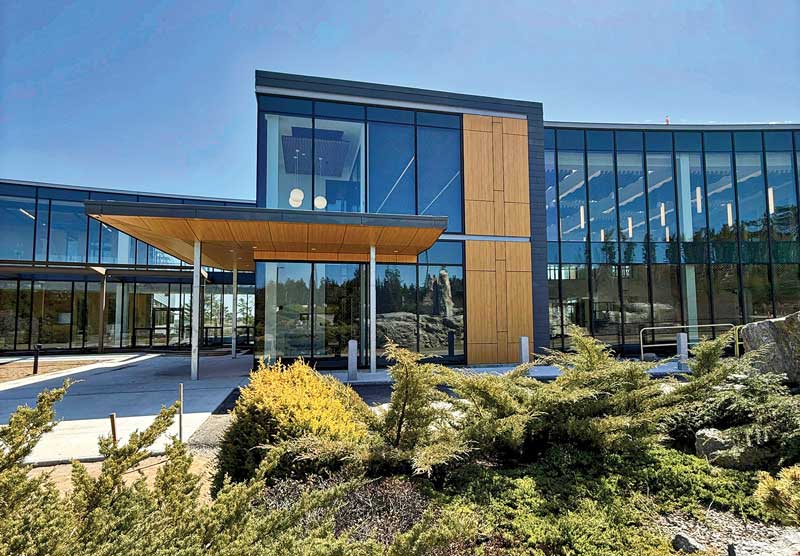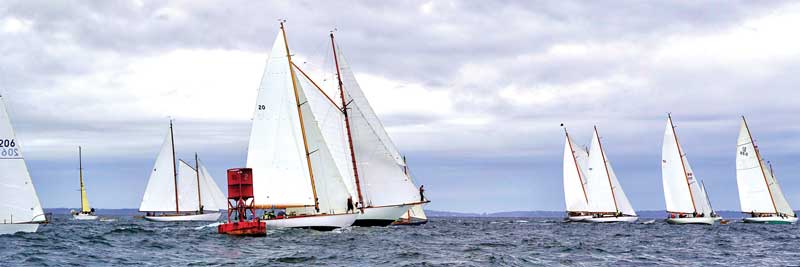
Ferry fare hike
Just a year after raising its fares, the Maine State Ferry Service implemented another rate hike, effective June 1, to meet what it called unanticipated rising costs. Ticket prices for walk-on passengers and vehicles were expected to rise by about 13.5 percent, according to a news report in the Working Waterfront.
By state law, half the service’s operating budget must come from fares and fees. The other half comes from the state’s highway fund. But fares and fees have only reached the 50-percent threshold in just three of the last 10 years, according to ferry service officials. As a result, the state highway fund has had to be tapped for an additional $4.6 million, according to Bill Geary, the Department of Transportation’s multimodal director, and a recent director of the ferry service.
“We need to adjust the tolls to cover half the increased cost,” Geary said.
State ferries serve the island communities of Frenchboro, Swan’s Island, Islesboro, North Haven, Vinalhaven, and Matinicus.

New building at Bigelow
Bigelow Laboratory has added a new building, the Harold Alfond Center for Ocean Education and Innovation, to its East Boothbay campus.
An $8 million gift from the Harold Alfond Foundation was essential to breaking ground on the physical expansion that will, in turn, expand opportunities for business innovation and applied research, and enhance the institute’s education programs, Bigelow noted in a news release.
The 25,000-square-foot addition constitutes a 40-percent increase in the laboratory’s footprint, providing space to accommodate a growing staff—and a growing portfolio of research.
The expansion includes high-tech teaching labs and classrooms. Cutting-edge laboratory facilities will accommodate several new research groups, while newly endowed funds will provide kick-starter grants to explore promising, early-stage ideas. At the centerpiece of the expansion is a 300-seat forum.
In addition to the support of the Harold Alfond Foundation, the new center was made possible by other gifts totaling $13 million and $12 million in federal funding through the National Institute of Standards and Technology 2023 Construction Grant Program. A $2 million maintenance endowment from an anonymous donor will permanently support capital repairs and equipment replacement to ensure the long-term viability of the new space.

Buoy oh buoy: bad news
News that the U.S. Coast Guard plans to remove more than 150 buoys and other aids to navigation, such as day beacons, from coastal New England waters, including Maine, caused an uproar this spring from mariners.
In a Local Notice to Mariners, the Coast Guard said the change was intended to support “the navigational needs of the 21st century prudent mariner,” to deliver effective, economical service and best maintain the most critical risk reducing buoys. This “improvement” is made possible, the notice stated, by the widespread use of GPS and electronic navigation systems that have made older aids to navigation superfluous.
The buoys targeted for removal include ones marking harbor entrances, ledges, and other routes and hazards. Some are lighted, while others have gongs, bells or whistles, according to the notice.
About 40 buoys slated for removal are in Penobscot Bay, including both bell buoys outside Camden Harbor and the can guarding the Northeast Ledges, as well as both bells at the ends of the Eggemoggin Reach.
But boaters, both commercial and recreational, were not convinced. Not all skippers have access to the necessary electronics, which also are not always reliable, opponents argued.
The presence of physical markers are important navigational alternatives when electronics fail, or when boating in the fog or at night, mariners told various news organizations.
Even the Coast Guard’s own navigation Standards Manual warns against “over reliance on a single source of vessel positioning data, such as AIS, GPS, radar, or navigation aids, for safe navigation and collision avoidance,” one mariner noted. Opponents include representatives of the fishing industry, boatbuilders, and others. This writer could not find anyone who supported the move.
The Camden Yacht Club, one of many organizations asking its members to submit comments, noted the savings, which it pegged at $12 million, would be a drop in the bucket of the Coast Guard’s overall $13.8 billion budget. CYC members Dick Cease and Mark Van Baalen noted that wise mariners know not to rely on a single method of navigation. “These buoys serve an important navigational purpose by providing ground truth to electronic navigation systems such as GPS. Numerous incidents and casualties related to failures or discrepancies in these systems are continuously reported in the maritime press. It is also simply not true that all navigators have access to, and employ, electronic navigation systems,” they wrote.
The Coast Guard set a June 13 deadline for feedback on its plan. The agency’s map showing which aids to navigation were slated for removal (navcen.uscg.gov/msi) was difficult to navigate. An unofficial one (uscg-marker-removals.webflow.io) promoted by several online commenters gave a clearer picture, but this writer was unable to confirm all the information.
Dean Pike hands over the helm
Moose Island Marine, a long-time Eastport chandlery has a new owner. Dean Pike handed over the helm to Matt Lacasse, according to a story in the Maine Coastal News. Lacasse previously had bought Pike’s boatyard, which he renamed Deep Cove Marine.
“I did not want to take on too much, but it made good sense to have it,” Lacasse told the newspaper. “They were built together and they are meant to be together and we do a lot of business here. We can save a lot of money by owning it.”
Pike began the business in the Quonset hut in 1980 and operated it there until 1995 when he moved into a new building. He carried everything a boater, whether commercial or pleasure, might need, according to the news story. In 1984 he bought property on the other side of the road from the Boat School and started the boatyard that he sold to Lacasse.
Born in Calais, Lacasse came to the Boat School in 2002 and then went to work for Pike in 2003. He later left and worked at several other marine-related companies before returning to work again for Pike.
Pike has been involved with trying to re-open the Boat School in Eastport, which closed in 2012. He plans to remain involved with that effort for the time being, according to the newspaper.
Portland Boat Show gets new owner
After 22 years under the ownership of founders Julie and Phil Michaud, the Portland Boat Show has been acquired by Portland Yacht Services, according to a story in Mainebiz and a news release from PYS.
A full-service boatyard on West Commercial Street, Portland Yacht Services is owned by Joanna and Phineas Sprague Jr., who ran the Maine Boatbuilders Show for many years.
“This acquisition aligns with our mission to support and enhance the boating community in New England,” Jason Curtis, vice president of operations for Portland Yacht Services, said in a release. “Our team is eager to build upon the show’s rich tradition and introduce new elements that reflect the evolving needs of boaters.”
The 2026 edition of the Portland Boat Show is scheduled to take place from Feb. 25 to March 1 at the Portland Sports Complex, located at 512 Warren Ave.
Maritime classes in Belfast
Students at Belfast Area High School are getting an in-depth education in all things maritime, thanks to a waterfront-focused multidisciplinary program called the Belfast Marine Institute. Started by history teacher Charles Lagerbom, the program features multidisciplinary, STEAM-based coursework; student-led research; internship opportunities; and community engagement. Goals for the program, according to a story in the Working Waterfront, include promoting an understanding of the issues affecting the marine environment, and an awareness of the many available marine-related scientific, technological, and commercial careers.
Students in the program have experienced diving through a SCUBA discovery course, and engaged with the community through field trips and involvement in Maine’s Fishermen’s Forum and World Oceans Day. They also have been certified in cold-water safety training, first aid, CPR, and AED, according to the Working Waterfront.
With two years of intense, grant-powered development behind it, the Marine Institute is focused on expanding to include topics like sea stories, navigation, ocean chemistry, small business development, computer science, and technical drawing.
It’s great to see high school students being grounded in industries that play such a key role in the Maine economy.
Money in and money out
Keeping track of which Maine programs have been lost as a result of federal funding cuts and which have been restored as a result of lobbying or legal action has been confusing. Last month, for example, the University of Maine’s Advanced Structures and Composites Center announced the layoff of nine employees as a result Washington’s funding cuts, which also put a halt to the university’s floating offshore wind energy turbine platform project.
Then just a short time later, U.S. Sen. Susan Collins announced an $8 million partnership between the U.S. Department of Transportation’s Advanced Research Projects Agency and UM’s Composites Center focused on developing technologies that will deliver bridges at half the cost, in half the time, and with twice the lifespan of many current bridges, according to a news release form the senator’s office.
The press release additionally stated that the senator has “secured more than $18 million in Congressionally Directed Spending for UMaine’s Advanced Structures and Composites Center through her role on the Senate Appropriations Committee.”
In its story about the cuts and layoffs, the Bangor Daily News reported that they occurred after the Trump administration paused millions in awards to help the center build floating turbines and complete other projects.
Waterfront funding cuts
More than a dozen plans to bolster Maine communities against the threats of climate change will have to find new sources of funding after the Trump administration announced plans to end the Federal Emergency Management Agency program titled Building Resilient Infrastructure and Communities, or BRIC, last spring, according to a report in the Maine Monitor.
Funds not yet distributed to local grantees must be returned to the U.S. Treasury or the Disaster Relief Fund, a separate FEMA program that reimburses localities after disasters strike, according to the report.
A total of 18 resilience projects in Maine saw their BRIC applications terminated with the cancellation of the program, a spokesperson for the Maine Emergency Management Agency told the Monitor.
Of those projects, MEMA was able to find alternative funding for 14, said MEMA spokesperson Vanessa Sperrey.
The news of those cuts was followed by news of yet more funding cuts, this time in the Hazard Mitigation and Grant Program, a billion-dollar program that states have long used to protect vulnerable homes and infrastructure from floods and other disasters.
✮
Over the bar
The boating world lost one of its heroes last spring with the passing of Carl Cramer, former publisher of WoodenBoat magazine. His longtime friend wrote this tribute:

We met many years ago at the launching of Whitefin, the 92-foot wooden Bruce King-designed sailboat. It was a big celebration that combined all the things that Carl loved: beautiful boats built of wood, crowds, and a good party. I shared this love and we became great friends.
A few years later, Carl took over my job as advertising director at WoodenBoat. I was starting Maine Boats & Harbors, and as a serial launcher of magazines, Carl understood the perils of publishing. His first move at WoodenBoat was to hire me as an independent ad sales rep. That revenue stream was key to my ability to grow MBH&H.
Carl loved boats, and he loved publishing, and he was passionate about combining the two. First with his work at WoodenBoat magazine, then with his creation of a sister publication, Professional Boatbuilder, and then IBEX, the globally important International Boatbuilding Exposition and Conference. Under Carl’s direction, and as he would be the first to point out, the hard work of the excellent staff, all three became vitally important in the world of boats.
Besides being a serial publisher, Carl also was a serial boat owner. He loved buying boats—sail, power, and human driven—each one unique. As was Carl. Brilliant, intense, fun-loving, loyal, and so wise. I will miss him, as will legions of his friends and fans.
—John K. Hanson Jr.






